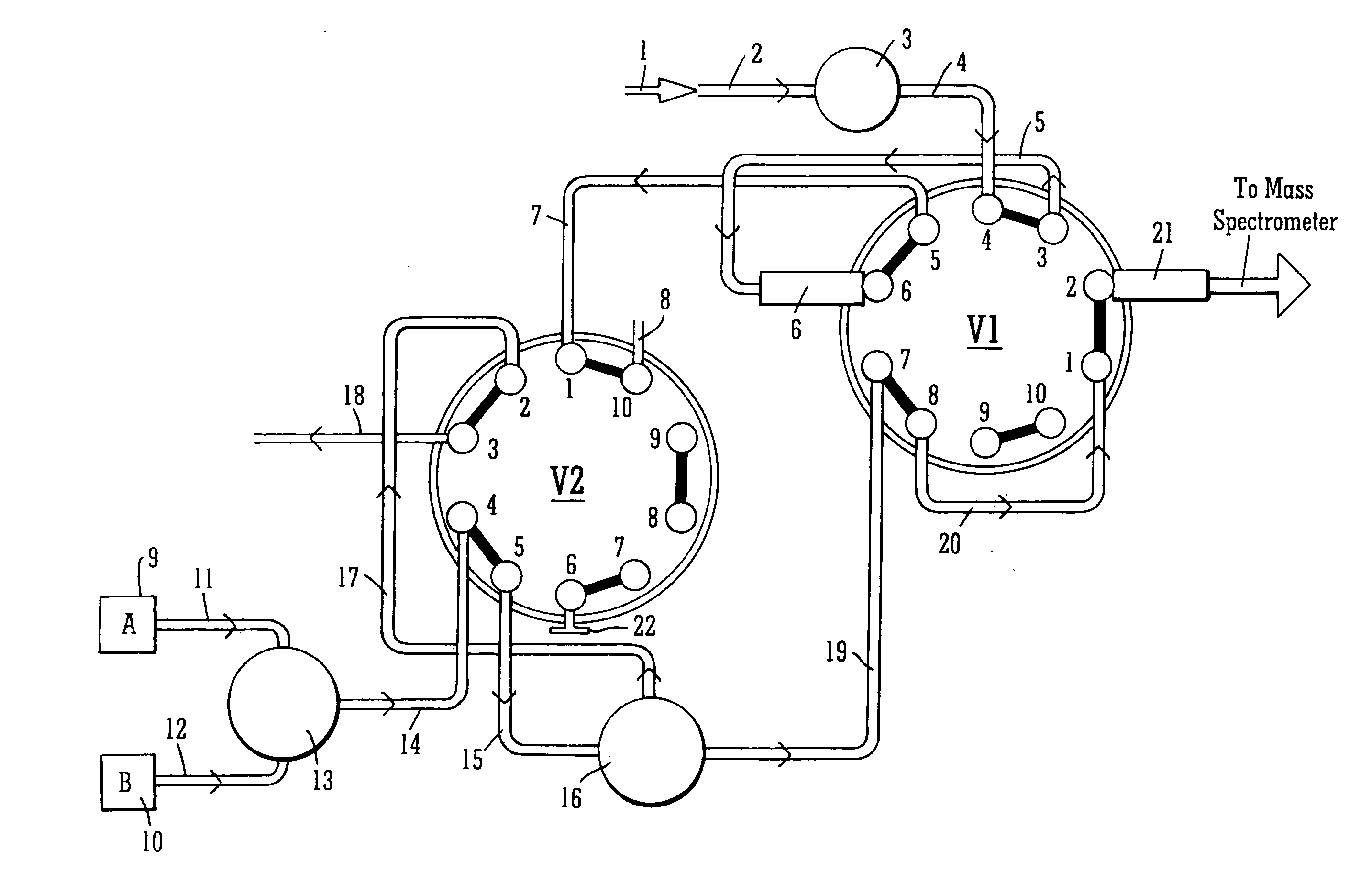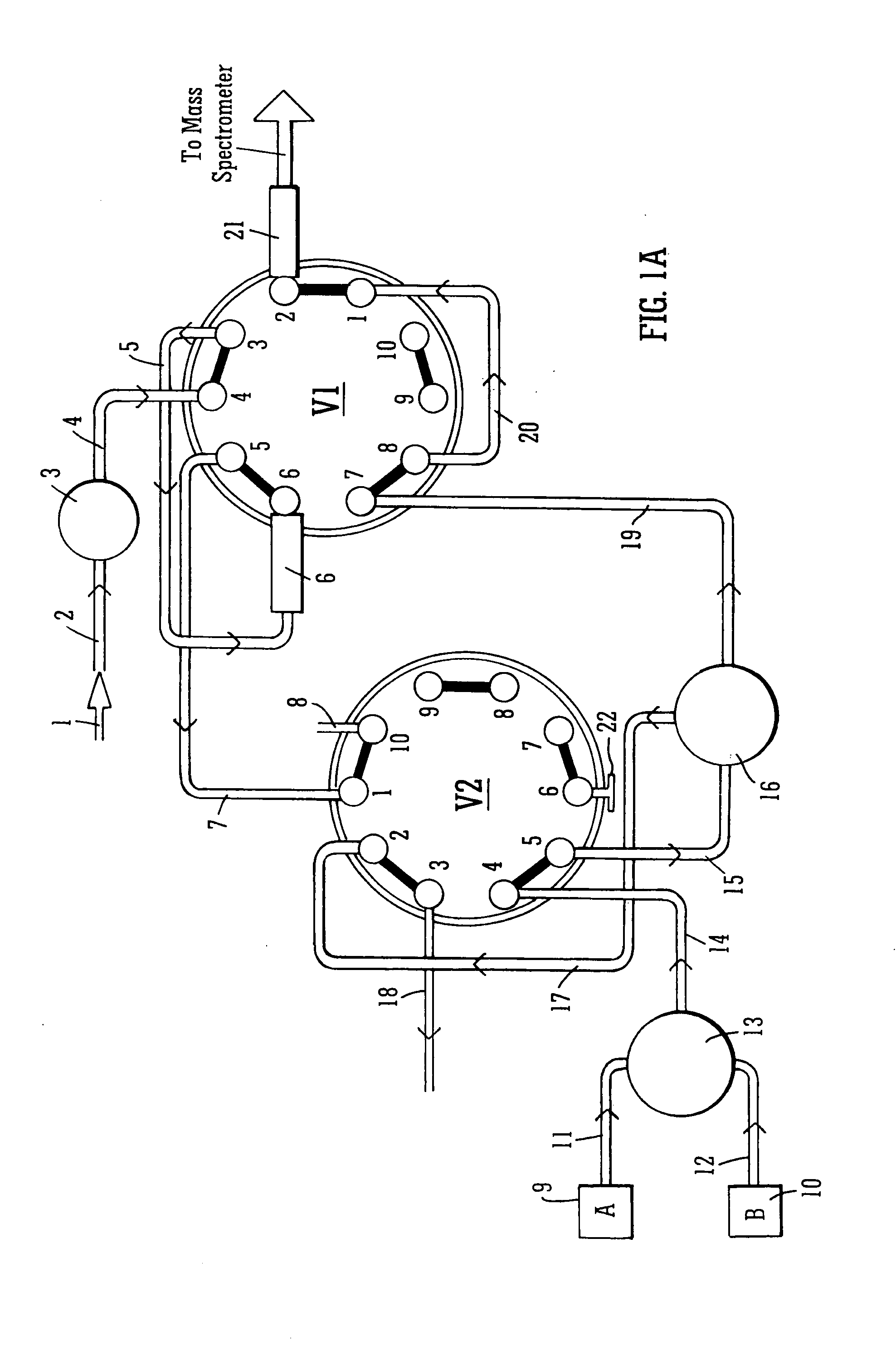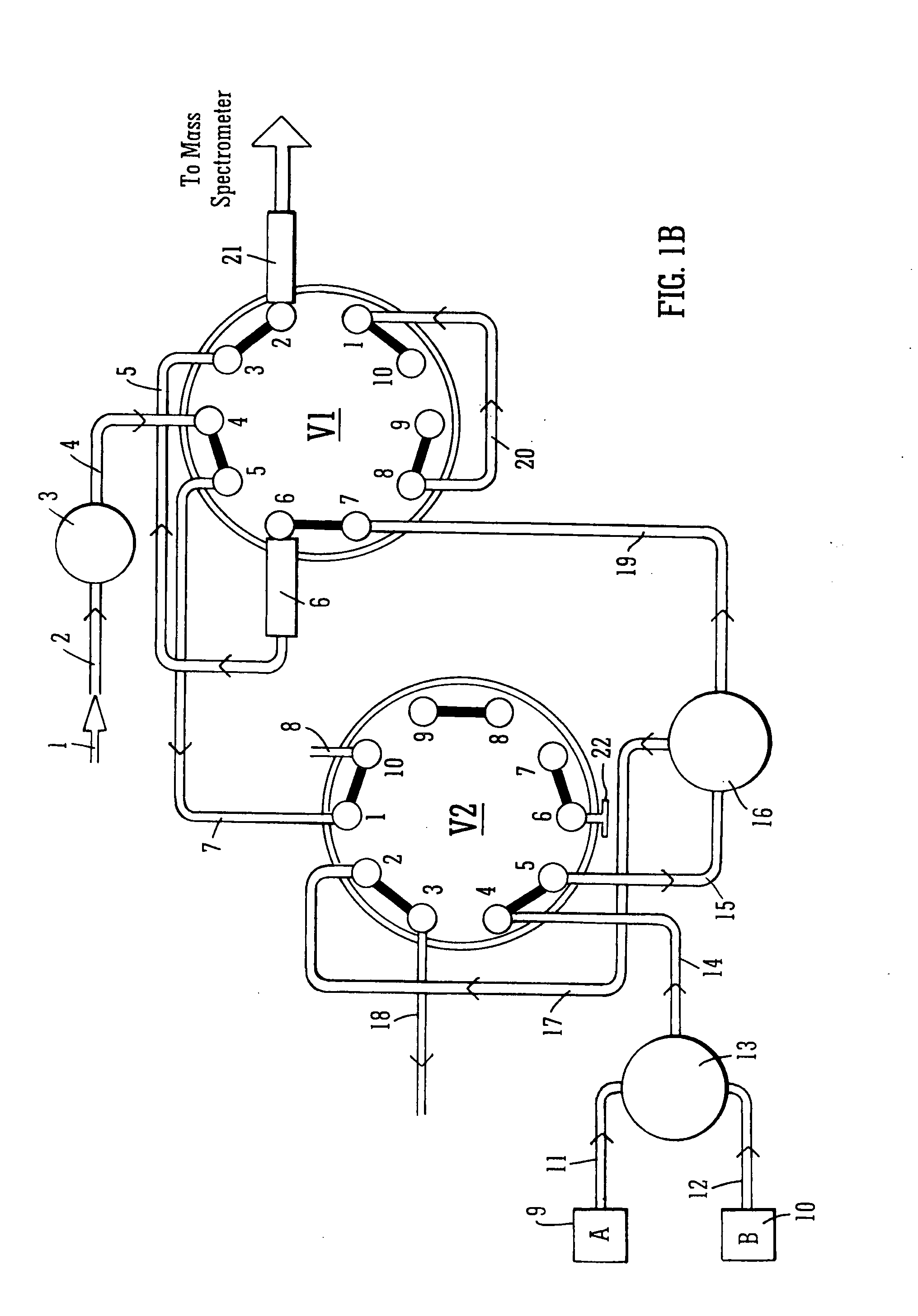Mass spectrometer
a mass spectrometer and mass spectrometer technology, applied in the field of mass spectrometers, can solve the problems of unsuitable direct flow arrangement, unsuitable diameter columns, and relatively high flow rates, and achieve the effect of reducing the number of mass spectrometers
- Summary
- Abstract
- Description
- Claims
- Application Information
AI Technical Summary
Benefits of technology
Problems solved by technology
Method used
Image
Examples
Embodiment Construction
[0083] A preferred embodiment for implementing variable flow chromatography with a split flow chromatography system will now be described with reference to FIGS. 1A, 1B and 1C. The preferred chromatography system preferably comprises two ten-port switching valves V1,V2. Different sizes of tubing and capillaries may be used to implement the system. The valve rotor positions are indicated in each figure by thick lines. For example, with respect to valve V1 as shown in FIG. 1A, port 1 is connected to port 2, port 3 is connected to port 4, port 5 is connected to port 6, port 7 is connected to port 8, and port 9 is connected to port 10.
[0084] The split flow chromatography system as shown in FIGS. 1A, 1B and 1C may, for example, be used in conjunction with an analytical column 21 having an inside or internal diameter of 180 μm or less. The split ratio is preferably dependent upon the back pressure of a restrictor compared with the back pressure of a precolumn 6 plus analytical column 21....
PUM
| Property | Measurement | Unit |
|---|---|---|
| internal diameter | aaaaa | aaaaa |
| length | aaaaa | aaaaa |
| size | aaaaa | aaaaa |
Abstract
Description
Claims
Application Information
 Login to View More
Login to View More - R&D
- Intellectual Property
- Life Sciences
- Materials
- Tech Scout
- Unparalleled Data Quality
- Higher Quality Content
- 60% Fewer Hallucinations
Browse by: Latest US Patents, China's latest patents, Technical Efficacy Thesaurus, Application Domain, Technology Topic, Popular Technical Reports.
© 2025 PatSnap. All rights reserved.Legal|Privacy policy|Modern Slavery Act Transparency Statement|Sitemap|About US| Contact US: help@patsnap.com



